- Home
- Patrick Robinson
Scimitar SL-2 (2004)
Scimitar SL-2 (2004) Read online
Scimitar SL-2 (2004)
By: Patrick Robinson
- - Synopsis
The world's most renowned volcanologist mysteriously disappears after a lecture on geophysical catastrophes. Two policemen are found brutally executed on the steps of London's nearby Albert Hall. Then, Mount St Helen's suddenly and inexplicably erupts in Washington State, leaving a wake of death and destruction. The new, liberal administration in the White House ignores these apparent coincidences, but the retired Admiral Morgan, former National Security Adviser to the President, and Lt. Jimmy Ramshawe are shocked into action. Only a missile, launched from a nuclear submarine, could have had the power to blow up the volcano. Is this the fabled HAMAS terrorist, Major Ray Kerman, at work again? Their suspicions are quickly confirmed by a HAMAS ultimatum: Total military evacuation of the Middle East or the terrible threat of a mega-tsunami - the greatest tidal wave in 4000 years of world history. Both men know immediately what that means: the volcano Cumbre Vieja, glowering over the island La Palma in the Canaries. A nuclear missile, such as Kerman's brand-new, state-of-the-art Scimitar SL-2, launched straight at the heart of the volcano would explode the mountain into the Atlantic Ocean.
Prologue
10.30 P.M., Thursday, May 8, 2008
Kensington, London.
PROFESSOR PAUL LANDON, known to an entire generation of university students as “Lava,” hurried through the lower ground floor doorway of the Royal Geographical Society. Out into the darkness of wide, tree-lined Exhibition Road
were the capital’s highway of enormous museums, running south from Hyde Park.
He paused on the broad graystone doorstep, a spot where many another great man had stood before him—the explorers Captain Scott of the Antarctic and Ernest Shackleton; the first conquerors of Everest, Sir Edmund Hillary, who made the summit, and Lord Hunt, who led the historic 1953 expedition.
Like Professor Landon, they were celebrated Fellows of the Royal Geographical Society, and like him, they had all delivered a series of stunning Spring Lectures at the lectern of the auditorium inside the great building. Like him, they had packed the place, and held their audience spellbound.
The prime difference between the great adventurers of the twentieth century and Professor Paul “Lava” Landon was that of subject. Whereas Scott, Shackleton, Hillary, and Hunt had entertained with breathtaking accounts of human survival in freezing conditions, the Professor had just explained in dazzling detail the forthcoming end of the world. No firm dates, of course. Like all masters of global geophysics, Professor Landon operated in approximate time slots of 10,000 years.
The upcoming catastrophe would likely occur in around 7,000 years, he concluded. “But then again,” he added, “it could just as easily happen next Friday, shortly after lunch.”
The typical Royal Geographical crowd, the scholarly, understated, well-heeled English elite, which occupied the auditorium, had loved the lecture. It had been meticulously planned, and flawlessly delivered, with excellent graphics and film clips.
The presentation illuminated the mighty eruptions of volcanoes around the world, the coast-shuddering effects of tidal waves, the ravages of earthquakes. But mostly it focused on the super-eruptions of the past like the one that split Indonesia’s Krakatoa apart in 1883, wiping out 36,000 residents of Java and Sumatra.
Landon told them of the staggering eruption of Wyoming’s Yellowstone Park volcano, which dumped molten magma and ash into California, Texas, and even onto the seabed of the Caribbean. It actually happened 650,000 years ago but “Lava” Landon made it seem like last summer.
He produced a graphic study of the pulverizing blast of Mount St. Helens in Washington State, in which the north flank swelled into a massive balloon of lava before literally exploding, blowing the mountainside asunder and obliterating nearly 400 square miles of forest.
That happened in 1980, and it led Professor Landon inevitably to the climax of his speech—the possibility of a tsunami, a Japanese word describing a series of mountainous waves generated either by an earthquake or, more likely, by a massive volcanic landslide into deep ocean.
Professor Landon’s closing focused on the new potential landslide on the southwest coast of La Palma, the northwesternmost of the Canary Islands. (Jutting out from deep Atlantic waters, La Palma stands 375 miles off the southern coast of Morocco.)
The fact was, he explained, that a gigantic hunk of volcanic rock, several miles long and set on a searing fault line in the earth’s crust, had slipped in the last forty or fifty years, maybe twelve feet down the steep cliff, detaching from the west flank. And somewhere behind this colossal, unstable chunk of rock lay, potentially, the simmering core of the mighty volcano of Cumbre Vieja.
“That lets rip, and the lot goes,” Professor Landon asserted, brightly. “It’d send a staggeringly large rock, several cubic miles of it, crashing off the west flank of the volcano, straight into the Atlantic at more than 200 mph, and surging along the ocean floor, at maybe 400 mph. I’m talking about one of the largest landslides in the past million years. Actually I’m talking about the total collapse of the southwest section of La Palma.”
The packed audience of ex–Military and Naval Officers, scientists, academics, and scions of ancient landed families, which had always shown an interest in such scientific matters, had listened, wide-eyed, as the Professor explained the establishment of a gigantic column of waves, ascending from the seabed to the surface, driving forward to reach speeds of 500 mph, and rising to a height of maybe 200 feet into the air as they arrived in shallow coastal waters.
Landon went on to describe how the monstrous tidal surge would wipe out large hunks of coastal southern England, Spain, and West Africa. And then, within nine hours from the moment of the rock’s impact on the surface of the Atlantic off southwestern La Palma, the massive wall of water would travel across the Atlantic and obliterate the entire East Coast of the United States.
“If Cumbre Vieja blows, this will happen,” he confirmed. “A rare and terrible mega-tsunami. Scientific research has estimated a number of intense waves, still perhaps 150 feet high, crashing into the restricted seaways off lower Manhattan, and then flattening the Wall Street area of New York with its very first sweep.
“The opening tidal wave would suck the debris out of the streets and flatten the ground before the next one of the wave series hit, demolishing buildings up to possibly fifteen blocks from the waterfront. And these giant waves—each one more than 100 feet high—would keep coming, progressively, until all of New York City was levelled.
“The biggest tsunami in recorded history. And all because of a single volcano.”
Professor Paul Landon was one of the world’s preeminent volcanologists, the Benfield Greig Professor of Geophysical Hazards at University College, London, and Director of the University’s Hazard Center.
He had worked on the slopes of literally dozens of the world’s most dangerous volcanoes, often successfully forecasting powerful eruptions. His nickname was well earned. And his skill in assessing the temperature and intent of the molten magma was matched only by his brilliance behind the lectern.
A bearded man of medium height, with pale blue eyes and the inevitable tweed sports jacket, checkered shirt, and college tie, he was forty-four years old and at the height of his game, his lectures in demand all over the world.
Lava Landon lived outside London in the commuter belt of Buckinghamshire with his wife, a City lawyer named Valerie. Their two sons, age fourteen and fifteen, collectively considered their father to be more or less insane, hearing almost every day of their short lifetimes that the world would probably end next week. Their skepticism didn’t faze Professor Landon in the least; like many of his fellow academics he wa
s quite astonishingly self-absorbed and fireproof to criticism.
As he stood now in the hoofprints of the mighty Scott, Shackleton, Hillary, and Hunt, he reflected on an evening’s work well done. He knew he had mesmerized the entire audience. But he wasn’t aware of one particular listener. Seated among the sea of spellbound faces, at the back of the auditorium, a twenty-three-year-old Palestinian freedom fighter, Ahmed Sabah, was taking notes, intent on every word, every graphic.
After the speech, Sabah slipped out quickly and was now waiting quietly in the dark southern precincts of Albert Hall, London’s spectacular rounded concert hall, situated next door to the Royal Geographical Society.
As Lava Landon walked along Kensington Gore, turning into the courtyard of the great hall of music, named for Queen Victoria’s consort Prince Albert, several thousand fans began to flood through the doors, following a live concert celebrating popular bands of the eighties.
It actually took Paul Landon four more minutes to reach the top of the long, wide flight of steps that led down from the hall to the notoriously dark rear-side road. There were hundreds of fans headed the same way and they almost engulfed the great geophysicist on the steps.
Directly below him he could see a black Range Rover, illegally parked, close to the sidewalk, no lights, facing the wrong way, with no one in the driver’s seat.
Ahmed Sabah and his two colleagues chose that moment to strike from behind. They expertly rammed a black canvas bag over Paul Landon’s head, holding him in an iron grip, and bundled him down the last two steps and into the back of the waiting vehicle.
There was no time to cry out, no time to fight back. An accented voice kept hissing into his ear, urging him to remain quiet unless he wanted to die, and against his left kidney he could feel the unmistakable push of a large knife.
It’s curious how the swarm of preoccupied people could have missed entirely what was happening in their midst. It must have been their single-minded determination to get home—searching for cabs, or late buses, hoping to make the London underground station at South Kensington in time for one of the infrequent late-night trains.
No one paid attention to the incident, certainly not the two London policemen on patrol with a large German shepherd named Roger, who were swept along the throng spilling out of the concert hall at the top of the steps, 30 feet above the scene of the kidnapping.
True to the modern ethos of the London police, they missed the crime, but homed in instantly on the illegal parking, fighting their way down the steps to apprehend the Range Rover’s driver, their hands already fumbling, urgently, for their trusty Breathalyzers.
By the time they arrived, the driver’s seat was occupied. Seated behind the wheel, his eyes hidden behind dark glasses, was the former SAS Major, Ray Kerman, currently known as Gen. Ravi Rashood, Commander in Chief of the Revolutionary forces of Hamas and, quite possibly, the most dangerous and wanted terrorist in the world.
Right now he was revving the engine impatiently, causing the policemen to unleash the huge dog, who flew at the car in two forward bounds, teeth bared, going for the driver’s right arm through the open window.
Big mistake, Roger. From the backseat of the Range Rover, Ahmed Sabah almost blew the dog’s head off with a burst from a silenced AK-47. The policeman running in front could not believe what he had seen with his own eyes, and he stopped some three yards from the vehicle, the late attack dog Roger in a heap at his feet.
Ahmed’s light machine gun spoke quietly again—three dull muffled thumps—and a short line of bullets through the forehead flung the constable backwards to the ground, dead.
The second policeman, seeing the dog, but not yet his fallen colleague, ran instinctively toward the driver. But he was late. The General was out on the sidewalk, and seized the astonished cop’s raised right arm, flinging him down in one fluid motion, his head almost on the seat.
He grabbed him by the throat and rammed his head against the door’s recess. One split second later, Ahmed slammed the door shut with stupendous force, cracking the policeman’s skull from the bridge of his nose to the hairline. At that moment, that Range Rover became the most expensive nutcracker since Pyotr Ilich Tchaikovsky worked his magic one hundred years before.
Ravi spun the police officer around and, with the butt of his gloved right hand, thundered a terrible upward punch into his already bleeding nose. The force rammed the bone clean into the brain, the classic unarmed-combat killing blow of the SAS. The London bobby was dead before he slumped back onto the edge of the sidewalk.
The men from Hamas had practiced the “defensive” operation for weeks, and there had been no mistakes. Only the presence of the big German-bred attack dog had surprised them. But not for long. From the moment they first grabbed the Professor, to their quick getaway, only seventeen seconds had passed.
And now the Range Rover made a full turnaround, its lights still dark, and headed for Exhibition Road
, the backseat prisoner unaware of the carnage that quickly grew smaller in the rearview mirror.
It took a full five minutes for two or three people among the pop concert crowd to realize that something had happened. No, Roger was not taking a nap. Yes, that was actual blood. No, the policeman lying flat on his back had indeed been shot dead and the holes in his forehead were not birthmarks. And no, the other chap in the blue coat slumped facedown in the gutter was definitely a policeman. And no, he was not drunk. And yes, like Roger and his colleague, he also was dead.
Two London policemen and their guard dog slain at the bottom of the great stone stairway, south of the Albert Hall.
Finally, more than seven minutes after the Range Rover left, someone dialed London’s 999 Emergency Service on a cell phone. Within another five minutes, two patrol cars were on the scene. By that time, General Ravi and his men had changed cars and were leisurely driving through West London to a cast-iron safe house owned by a few fellow Muslims in the suburb of Hounslow.
Professor Landon’s hands were now bound together with plastic masking tape, and he was still in the bag, in every sense of the phrase. He was sitting between two of the world’s most lethal Muslim fundamentalists, and in answer to his frightened pleas to know what was going on—since his captors plainly had the wrong man—he was told softly and firmly, Keep quiet, Dr. Landon, we wish only to talk to you and then you will be set free.
The first part was accurate. Almost. The second part was a lie. Lava Landon already knew far too much.
Back at the scene of the crimes, two ambulances were transporting the bodies of the murdered officers to St. Mary’s Hospital, Paddington, and a Royal Society for the Prevention of Cruelty to Animals van was loading the carcass of Roger into a box, while the police were desperately looking for witnesses.
But no one had heard gunshots. No one had actually seen either policeman being attacked. No, it was impossible to identify the exact type of four-wheel-drive wagon that may have contained the criminals. No one had seen its license plate.
Someone thought it had driven off with no lights. Someone thought it turned right, down Exhibition Road
. Someone else thought it turned left. No one could cast a single ray of light on the physical appearance of its occupants.
It was the most brutal slaying of police officers in London for nearly half a century, since the night when gangsters gunned down three policemen in Shepherd’s Bush, a couple of miles to the west of the Albert Hall.
But at that time, the police had been pretty sure who had committed the crime within about five minutes of the shooting. This time they did not have the remotest idea. They had no clues, no witnesses, and absolutely no motives to work on. And of course, they had no notion whatsoever that a celebrity kidnap victim was being held in the back of the getaway vehicle.
The interrogation of Professor Landon began at one o’clock in the morning. The black bag had been removed from his head, his wrists were unbound, and he was given coffee at a large dining room table in a white room wit
h no windows. Flanking the door were two Middle Eastern–looking guards wearing blue jeans, black boots, and short brown leather jackets. Both were holding AK-47s.
Before him sat a broad-shouldered English army-officer type, more formally dressed, no longer wearing sunglasses. He too was Middle Eastern in appearance, but his voice and tone could have been honed nowhere else on earth but a leading English public school.
The discussion was about volcanoes.
How many genuine eruptions have occurred in the world in recent years?
Probably a hundred since 2002, maybe a few more.
Can you name some?
Certainly…Montserrat in the West Indies…Karangetang, Indonesia…San Cristobal, Nicaragua…Tangkubanparahu in Java…at least three on the Kamchatka Peninsula, Siberia…Fuego in Guatemala…Stromboli in Italy…Kavachi Seamount, Solomon Islands…Chiginagak Island, Alaska…
How many in the past twelve months?
You mean serious ones, or just rumblings?
How many explosions?
Well, Colima in Mexico…Etna in Sicily…Fuego, Guatemala…the one in the Solomon Islands, and all three of the big ones on Kamchatka…plus Killauea in Hawaii…Maman in Papua New Guinea…always the Soufriere Hill in Montserrat…with a bit of a shout from Mount St. Helens in Washington State. Also some dire rumblings in the Canary Islands—the most serious of all.

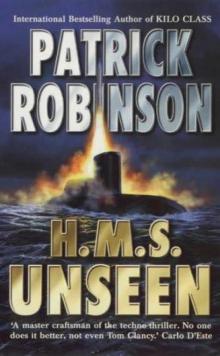 H.M.S. Unseen am-3
H.M.S. Unseen am-3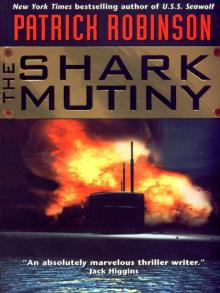 The Shark Mutiny (2001)
The Shark Mutiny (2001)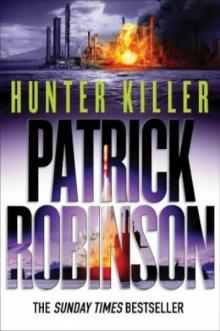 Hunter Killer am-8
Hunter Killer am-8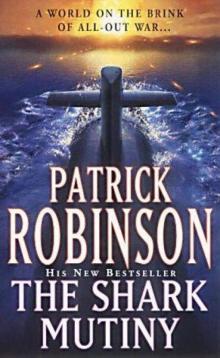 The Shark Mutiny am-5
The Shark Mutiny am-5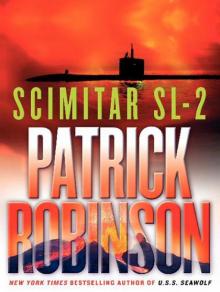 Scimitar SL-2
Scimitar SL-2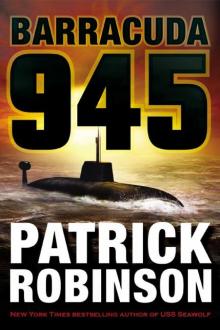 Barracuda 945 am-6
Barracuda 945 am-6 Hunter Killer
Hunter Killer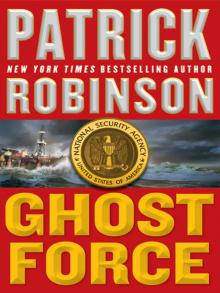 Ghost Force
Ghost Force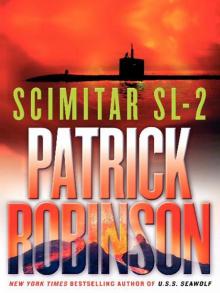 Scimitar SL-2 (2004)
Scimitar SL-2 (2004) Kilo Class am-2
Kilo Class am-2 The Lion of Sabray
The Lion of Sabray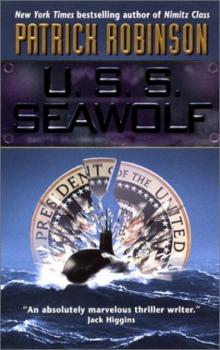 U.S.S. Seawolf am-4
U.S.S. Seawolf am-4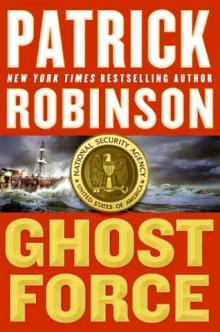 Ghost Force am-9
Ghost Force am-9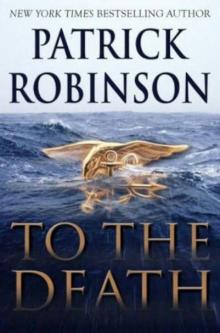 To the Death am-10
To the Death am-10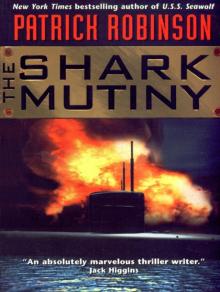 The Shark Mutiny
The Shark Mutiny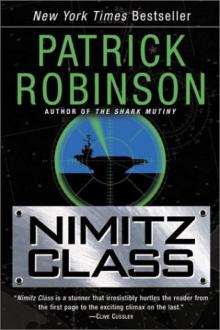 Nimitz Class am-1
Nimitz Class am-1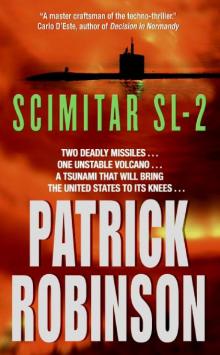 Scimitar SL-2 am-7
Scimitar SL-2 am-7 Barracuda 945
Barracuda 945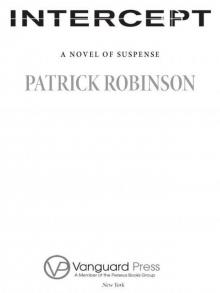 Intercept
Intercept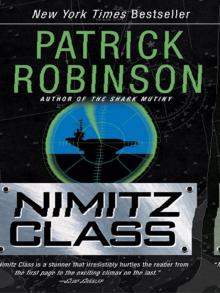 Nimitz Class (1997)
Nimitz Class (1997)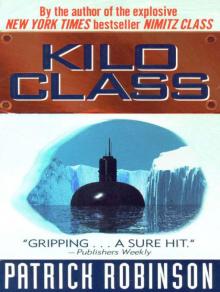 Kilo Class
Kilo Class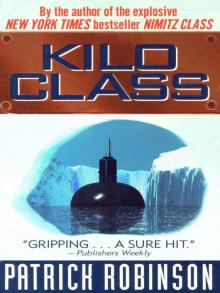 Kilo Class (1998)
Kilo Class (1998) Diamondhead
Diamondhead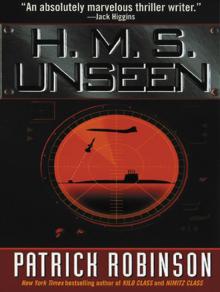 H.M.S. Unseen
H.M.S. Unseen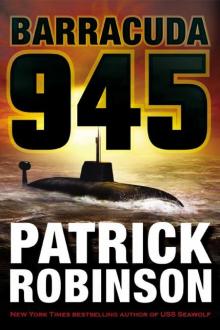 Barracuda 945 (2003)
Barracuda 945 (2003)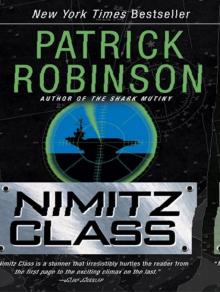 Nimitz Class
Nimitz Class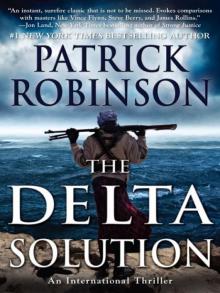 The Delta Solution
The Delta Solution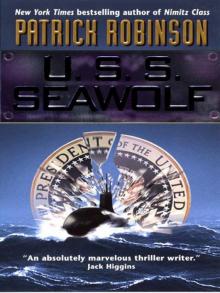 U.S.S. Seawolf
U.S.S. Seawolf